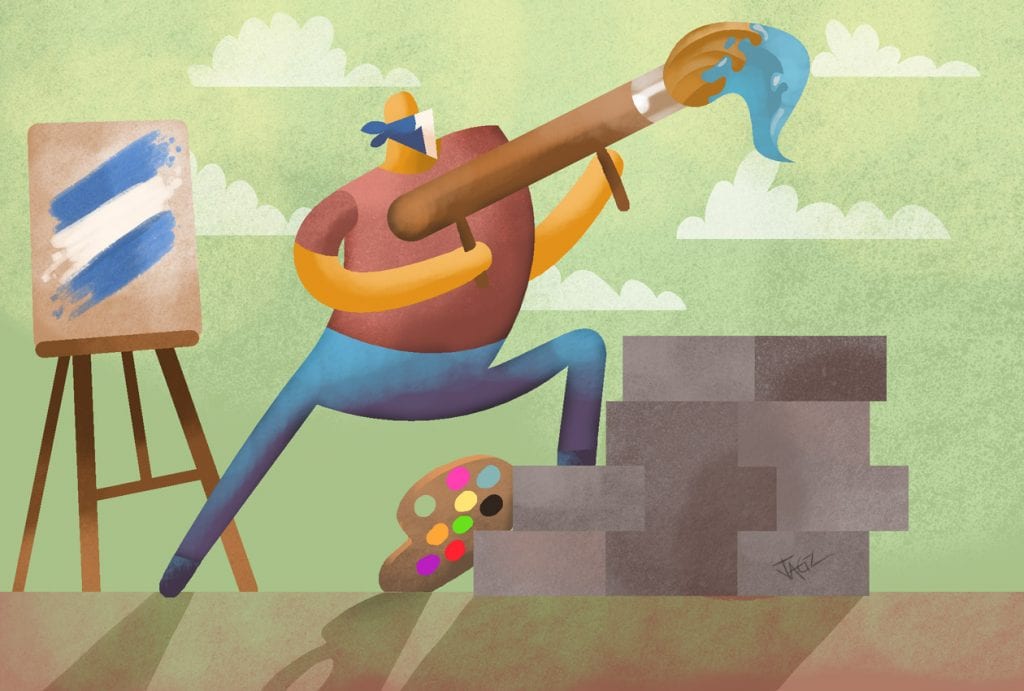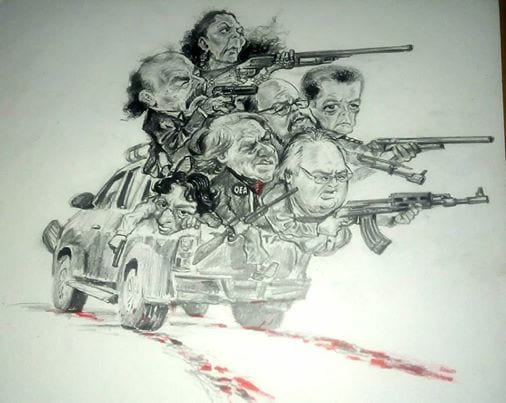The “People’s Art” that Emerged from the Protests in Nicaragua

Dozens of works of art on canvas, paper and sculptures have been shared under the hashtag #ArteDelPuebloNic, as an initiative of a group of Nicaraguan plastic artists.
By Franklin Villavicencio (Confidencial)
HAVANA TIMES – “Here I am…, sadly entrenched in my easel”, says M. Victor, a Nicaraguan artist whose routine of drawing portraits has radically changed since the protests started last April 18th. He stopped doing portraits of happy people to instead portray “the rawness” of the repression Nicaraguans are living.
The catalyst for his work are now, the news, death reports, the missing. M. Victor lives out of art. Since April -the month in which the student protests started, first because of the poor management of the Indio Maíz Reserve wildfire and later on because of the social security reforms-, he has created works of art that for him have a historical vision, in other words, he wishes that, in the future, “in the new Nicaragua,” these will be appreciated.

“My philosophy is that these paintings remain for posterity,” says M. Victor via telephone. He prefers going under this name for “safety measures”, since he has received death threats from “pro-Government fanatics.”
His works, just like hundreds of Nicaraguan artists, have become viral on social media. One of them is “Homeland carrying its children,” in which the figure of a woman stands out wrapped in a blue and white flag with children in her arms, while blood drips down her leg. The artwork was dedicated to Daryelis and Matías, two children who died burned alive “by this murderous dictatorship” this past June 16th in their home in Managua.
- Victor hasn’t set a price for the majority of the artworks he has made in the wake of the protests, but if anyone is interested in buying contacts him for a purchase he wouldn’t hesitate in selling them.
Just like the ones made by this artist, dozens of works of art on canvas, paper and sculptures have been shared under the hashtag #ArteDelPuebloNic, an initiative that has been embraced by a group of Nicaraguan plastic artists in rejection of the government repression in recent months, which has left 273 dead and more than 1,500 injured, according to figures issued several weeks ago by the Inter-American Commission on Human Rights (IACHR).

“I believe art itself has to show solidarity and support for the people. We’re a certain kind of trench from which we’re contributing”, he says. In the future he hopes that all of the artworks made by this group of artists are exhibited in a gallery, where people can freely see them. Meanwhile, the only way to appreciate them is on social media.
Otero Elfox is another artist who, watching how the death numbers increased each day, decided to dig in behind his easel and paint works that connected with the “sense of the people”. When he saw the news about the family burned alive by paramilitaries in the Carlos Marx neighborhood, on June 16th, his first impulse was to create an illustration.
“That was a spontaneous work. I felt powerless, saddened and like crying, and it portrayed two children on their way to heaven with two balloons. I decided to post it and never expected that illustration was going to be so accepted and shared, he tells.
However, this has not been the only work developed in the context of protests and government repression. When the deaths list reached 63, Otero made a painting in which he outlined a sad and deformed looking face through red strokes.
“From the beginning, from the very first second I already knew this was getting worse. There was the first dead person and I told myself I had to contribute, that I couldn’t be silent about it, and decided to use art to carry that message to all of society and Nicaraguan people,” he said.

Otero Elfox’s art works have been sold at different prices, through the internet. “Hecatomb, anguish and missing”, a canvas showing police officers and paramilitaries carrying dead bodies, sold at 80 dollars. Some of them are around 20 and 50 dollars.
Both Otero and M. Víctor agree that art in this last decade has been kidnaped by the Government and by “elites” of power. For them, Nicaragua is no longer the same ever since April 18th. Neither are they themselves nor their art the same as before, since now they address subjects of the missing, dead and murdered.
For Otero Elfox, the new civic resurgence of the country not only covers the political and social, but also the cultural. “We are more united, art comes more solid, more social and more committed to Nicaragua. The Arts will improve in this country”, he assures.
To see more of the art work click here.





